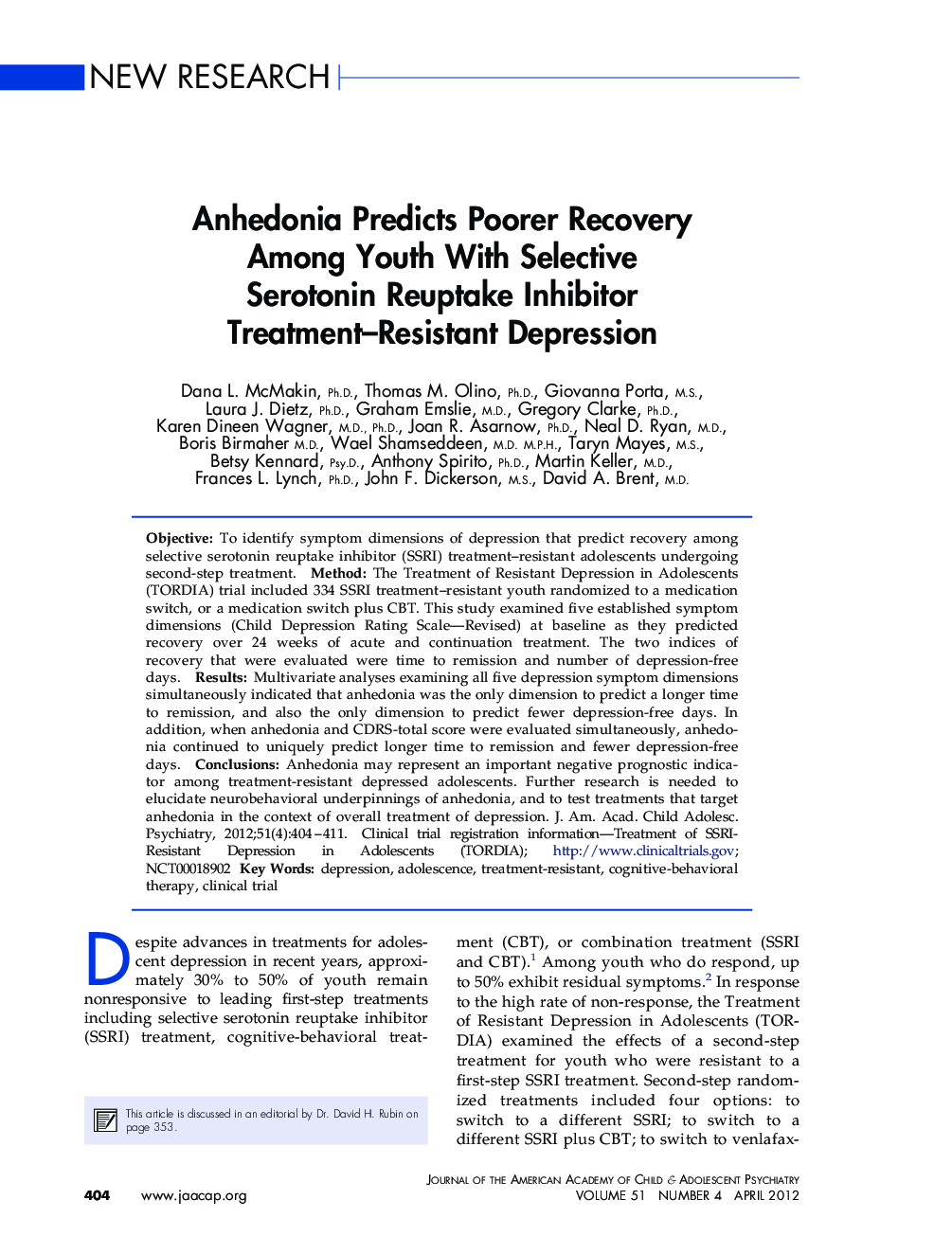| Article ID | Journal | Published Year | Pages | File Type |
|---|---|---|---|---|
| 325368 | Journal of the American Academy of Child & Adolescent Psychiatry | 2012 | 8 Pages |
ObjectiveTo identify symptom dimensions of depression that predict recovery among selective serotonin reuptake inhibitor (SSRI) treatment–resistant adolescents undergoing second-step treatment.MethodThe Treatment of Resistant Depression in Adolescents (TORDIA) trial included 334 SSRI treatment–resistant youth randomized to a medication switch, or a medication switch plus CBT. This study examined five established symptom dimensions (Child Depression Rating Scale—Revised) at baseline as they predicted recovery over 24 weeks of acute and continuation treatment. The two indices of recovery that were evaluated were time to remission and number of depression-free days.ResultsMultivariate analyses examining all five depression symptom dimensions simultaneously indicated that anhedonia was the only dimension to predict a longer time to remission, and also the only dimension to predict fewer depression-free days. In addition, when anhedonia and CDRS-total score were evaluated simultaneously, anhedonia continued to uniquely predict longer time to remission and fewer depression-free days.ConclusionsAnhedonia may represent an important negative prognostic indicator among treatment-resistant depressed adolescents. Further research is needed to elucidate neurobehavioral underpinnings of anhedonia, and to test treatments that target anhedonia in the context of overall treatment of depression.Clinical trial registration information—Treatment of SSRI-Resistant Depression in Adolescents (TORDIA); http://www.clinicaltrials.gov; NCT00018902
